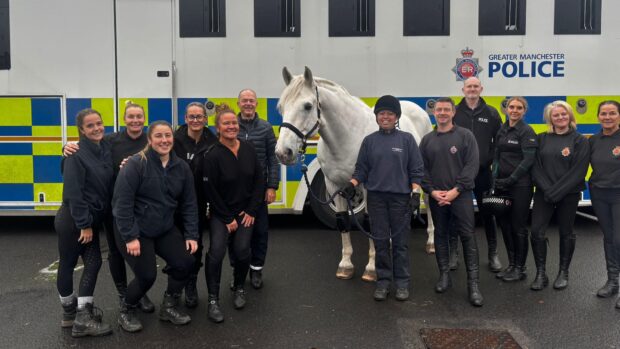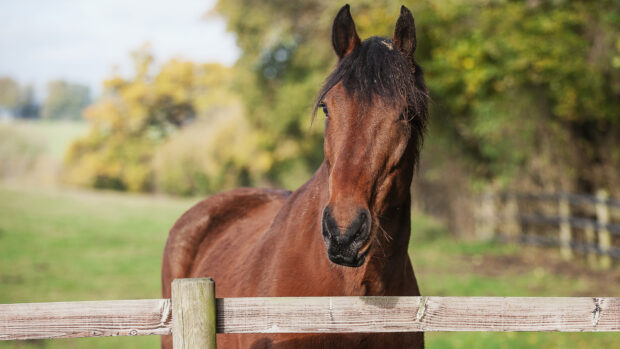With two more forces disbanding mounted units this year due to financial cutbacks — and further cuts on the way — could police horses on our streets become a thing of the past?
Mounted police units provide support to neighbourhood and community teams, as well as policing public events — including this year’s Olympics, Paralympics and royalcelebrations.
Following the Government’s spending review in 2010, police forces were told to make savings of up to 20% before 2014.
Mounted branches were some of the earliest victims. And with more cuts likely to occur after this year’s review, it is feared that more may be lost.
Nottinghamshire police’s mounted section was disbanded this September, saving the force £105,000 a year. The last active service for the horses was during the Paralympics.
“Four of the serving horses were retired to private homes or went to sanctuaries,” said a spokesman. “The remaining three continue in active service with Greater Manchester, South Wales and City of London.”
Essex Police disbanded in 1999 and was reinstated in 2007, only to be shut again this year — after it was told it needed to make cuts of £42million by 2014.
The force currently has eight horses — one of whom has already gone to the Horse Trust — and the disbanding of the unit will take place over the next few months.Axing the mounted section will save Essex Police £600,000 a year.
There are currently 14 mounted branches across England, Scotland and Wales, with a total of 286 horses. All forces will be looked at under the Government’s Public Service spending review.
Merseyside Police has 16 horses in its mounted section. A spokesman told H&H there are “no current plans” to reduce that number.
Avon and Somerset, which has 12 horses, hopes its branch is also safe. “No force wants to lose its horses — once gone, they are very hard to replace,” said assistant chief constable Rod Hansen.
“We are exploring the possibility of carrying out some research with a university around the qualitative benefits that mounted units bring in terms of trust and confidence, positive engagement and reassurance.”
In Yorkshire, west and south mounted units could merge — costs are being calculated, although a final decision is yet to be taken.
South Yorkshire has 12 horses, which — including the wages, buildings, vets and training — cost around £1million a year to maintain. West Yorkshire has 20 horses. Merging the two units, which is under consideration, would mean cuts from both.
Inspector Paul Smith from Greater Manchester Police, which is the biggest mounted unit in the north of England, told H&H he didn’t expect any further cuts to the branch.
“We had cuts last time around [implemented in January 2012], so we’re not expecting to lose any more. We’re actually looking for more horses — we have around 25, but we’re searching for more to train up.
“An ideal police horse is around 17hh, well schooled, good in traffic and between seven and 10 years old.”
And Thames Valley Police, who believe the unit is secure as it can be in the current economic climate, are also looking for another horse — to raise the total to 10.
For the full story see the current issue of H&H (15 November 2012)




